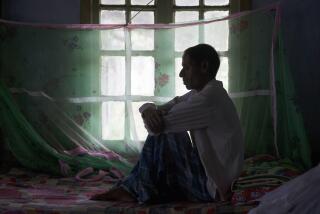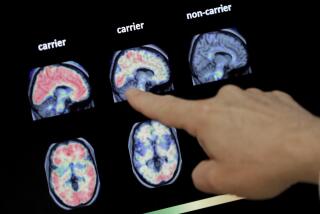Researchers Say New S.D. Cancer Data Will Provide ‘A Leap Ahead’
- Share via
San Diegans develop cancers at rates comparable to elsewhere in the United States, according to local researchers who are monitoring new cancer cases reported to health officials.
The cancer incidence rates were tabulated by the San Diego and Imperial Organization for Cancer Control, a state-funded organization that began collecting cancer data in California’s two southernmost counties Jan. 1, 1988. The state-funded cancer registry is one of 10 systems being formed to track cancer statewide, said UC San Diego pathology professor Sidney L. Saltzstein, the organizations’s director.
Data released during a Thursday press conference provided a “snapshot” of the types and incidence of cancer among San Diegans during 1988, Saltzstein said. The types and numbers of cancers reported during 1988 were “well within the realm of the usual numbers” generated by previous surveys elsewhere in the country, Saltzstein said.
According to SANDIOCC’s preliminary data, 6,361 new cases of cancer were reported in San Diego during 1988, and 189 cases were reported in Imperial County. A complete report will be issued in about four months, Saltzstein said.
According to the registry, the leading types of cancers reported in San Diego County in 1988 were genital, 1,475 cases; digestive-tract, 1,222; breast, 1,051, and lung, 966.
Although the study’s first-year results will help researchers learn more about cancer in San Diego, the “true value” of the registry will become evident with “the accumulation of data over many years,” Saltzstein said.
Armed with data from several years, researchers will be better equipped to determine whether suspected cancer clusters are linked to environmental causes, Saltzstein said. Researchers now must rely on incidental data that often is incomplete, Saltzstein said.
Researchers will also use the new registry to try to better understand why various populations are more susceptible to certain types of cancer. And, researchers will be able to track the long-term progress of individual cancer cases, Saltzstein said.
Although the registry will generate data about the incidence and type of cancer in San Diego, its reporting mechanism is designed to protect the confidentiality of individual cancer patients, Saltzstein said. SANDIOCC won’t identify cancer victims or the doctors and hospitals that provide treatment.
The registry will release geographical data about where the cancers develop. Researchers will use that data to learn whether suspected clusters of cancers are linked to environmental causes, said Cedric Garland, an associate professor of family medicine at UCSD.
For example, Garland believes data could help settle the debate about whether electric transmission lines generate electromagnetic fields that cause cancers. Researchers could plot the exact incidence of cancers in a given area and “superimpose a map of the power lines to see if there is a relationship,” Garland said Thursday.
Data from the registry’s first year is “valuable, but (the project) will get more valuable with each year’s additions,” Garland said. “This is a leap ahead” for researchers, Garland said.
Nearly 40 researchers already have submitted data requests to SANDIOCC, according to SANDIOCC program manager Joe Raffa.
Before the SANDIOCC project, most data about the incidence and type of cancer in San Diego was drawn from a statewide project that, since the 1940s, has surveyed 10% of Californians who developed cancer. That data, while accurate, did not give researchers enough information to focus on individual populations or specific geographic areas, Saltzstein said.
Interest in cancer registries is growing, Raffa said. Nearly 40 states are creating registries or have passed legislation enabling the creation of registries.
“The thought is that we’d eventually have a national registry,” Saltzstein said. “This is the obvious way to start.”
The state-financed cancer registry is modeled after an Orange County one, which began in 1980. State legislators approved funding for a statewide system of registries in 1985, Saltzstein said.
More to Read
Sign up for Essential California
The most important California stories and recommendations in your inbox every morning.
You may occasionally receive promotional content from the Los Angeles Times.












![Vista, California-Apri 2, 2025-Hours after undergoing dental surgery a 9-year-old girl was found unresponsive in her home, officials are investigating what caused her death. On March 18, Silvanna Moreno was placed under anesthesia for a dental surgery at Dreamtime Dentistry, a dental facility that "strive[s] to be the premier office for sedation dentistry in Vitsa, CA. (Google Maps)](https://ca-times.brightspotcdn.com/dims4/default/07a58b2/2147483647/strip/true/crop/2016x1344+29+0/resize/840x560!/quality/75/?url=https%3A%2F%2Fcalifornia-times-brightspot.s3.amazonaws.com%2F78%2Ffd%2F9bbf9b62489fa209f9c67df2e472%2Fla-me-dreamtime-dentist-01.jpg)
